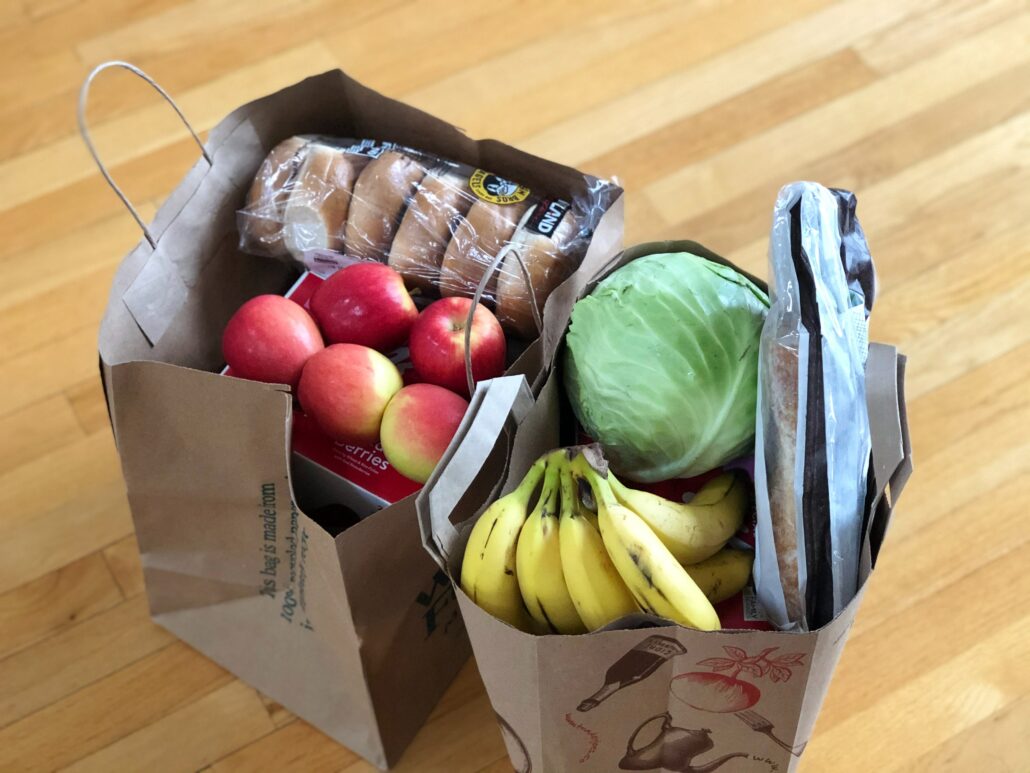By: Hadley Haas, WMEAC Policy Intern
The debate between paper, plastic, and reusable bags has long been argued, without a clear answer on which of these is actually better for the environment. There are many different opinions on this debate. Some say that paper bags actually use more resources to produce, while others assert that plastic bags are the worst for our planet because they’re petroleum-based. So, it might be surprising that plastic bags have the smallest carbon footprint, at least in terms of single-bag production. But that’s only the beginning, as how we use and dispose of shopping bags matters even more. While many think they know which bag is best, exploration into this debate provides a more complicated picture to shopping bag sustainability.
To analyze the impacts of each type of bag, life cycle analysis (LCA) looks at the efficiency, energy used, and environmental impacts a product is responsible for at every stage of its life. This includes the extraction of the raw materials, manufacturing, packaging, transportation and distribution, use and possible reuse, recycling, and final disposal. The compostable and recyclable aspects of paper bags makes them better in terms of disposal in comparison to other bag options. However, the manufacturing process of a paper bag requires ~four times as much water as a plastic bag according to a study done by the United Kingdom’s Environment Agency. This manufacturing process, where trees are turned into paper bags, produces 70 times more air pollution and 50 times more water pollution than plastic bag production. The recycling process for paper bags requires even more harmful chemicals which add to the overall environmental impact of these bags. From life cycle assessment calculations done as part of the UK study, based on each bag type, the average paper bag needs to be reused 3 times to neutralize its environmental impacts. With most people only use them for initial shopping and then maybe once thereafter, this still results in harmful impact overall from the bag’s life cycle.
Surprisingly, producing plastic bags creates the lowest environmental toll in comparison to its paper and reusable counterparts. Most commonly made from high-density polyethylene (HDPE), these bags do use petroleum fossil fuel resources. Despite this, the production process results in less carbon emissions, waste, and harmful by-products than the production of other cotton or paper bag options. Plastic bags are also recyclable, although they are not often recycled. Bags that aren’t recycled pollute the waste stream, as they don’t biodegrade. Additionally, these plastic bags most often break down into microplastics, which pollute ecosystems and have been found to cause harm in the body.
So, what about “reusable” grocery bags? These bags are most commonly made of cotton or non-woven polypropylene (PP), which is a more durable type of plastic than HDPE. As these bags are intended to be used multiple times, they use more materials that then need to be processed and refined to make the final products. This increase in materials for these bags means increased production and therefore more energy, water, and chemicals used. A 2011 study conducted by California State University Chico found that the production of PP bags specifically, results in more usage of non-renewable energy and freshwater than that for single-use plastic bags. The byproducts of these production processes that can contribute to atmospheric acidification and eutrophication of bodies of water, which can affect both humans and ecosystems. Cotton shopping bags need to be used 131 times to neutralize their environmental impacts due to higher production levels and byproducts resulting from such, and PP bags only need to be reused 11 times to be neutralized in comparison to HDPE conventional plastic bags.
Ultimately, the question of which bag is the most sustainable depends on how many times you’re going to use it and how carefully it gets disposed of at the end of its lifespan. This means that a sustainable bag choice may look different from person to person.There is no inherently right answer to the ongoing question of shopping bag sustainability supremacy. The best answer is to use the type of bag that you specifically will reuse the most – whether that be paper or plastic. Whatever type of bag is used, the key to reducing the impacts is to reuse it as many times as possible and where reuse for shopping is not practicable, other reuse, e.g. to replace bin liners, is beneficial.
Other resources:
https://news.climate.columbia.edu/2020/04/30/plastic-paper-cotton-bags/


